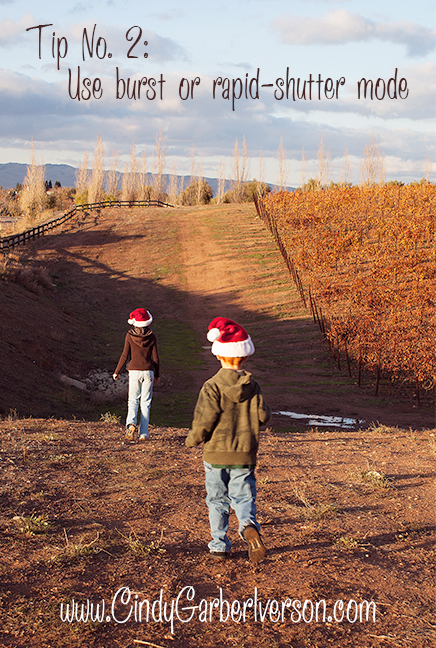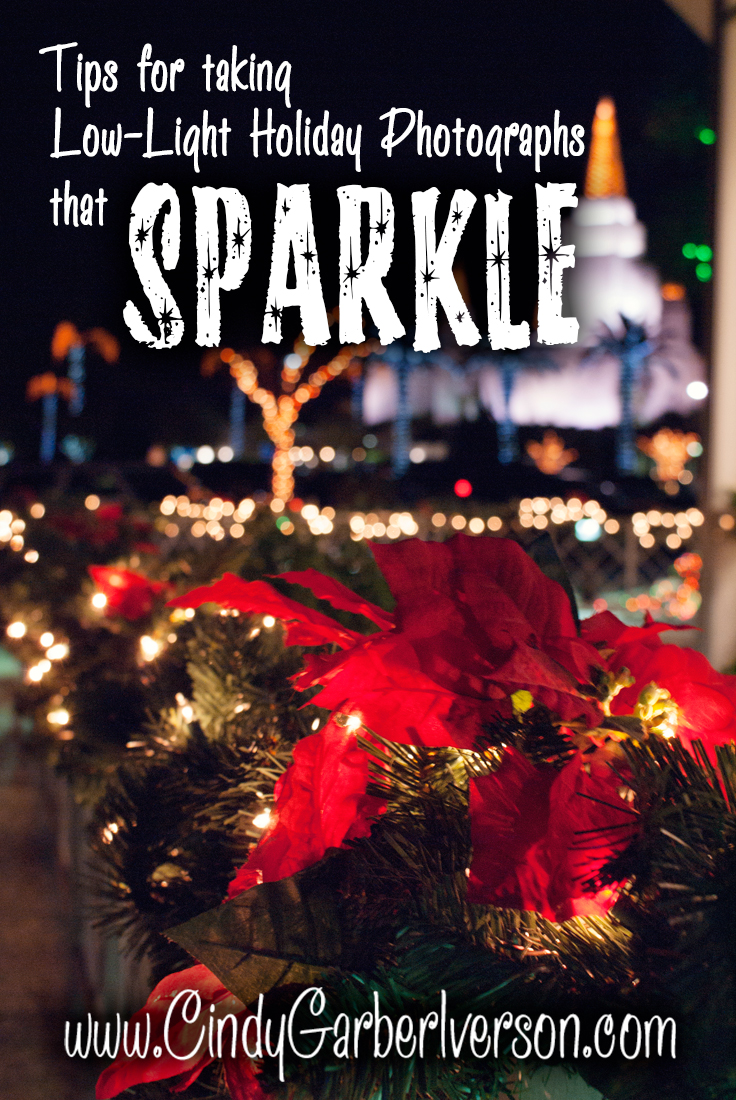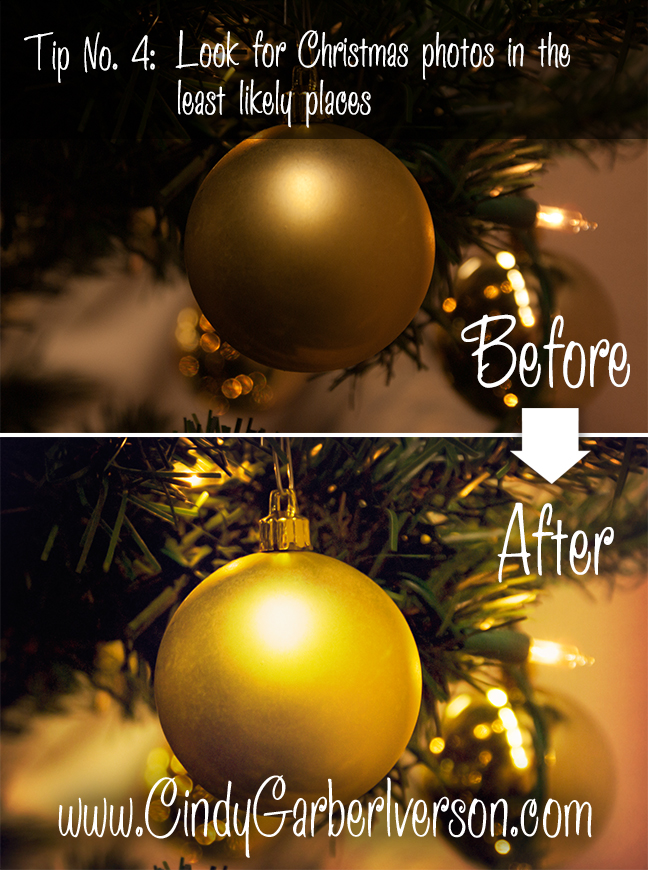In the northern hemisphere, the Christmas holiday falls during a time when days are shorter and nights are longer. The custom of decorating with twinkly lights was probably born from a need to add light to those long (often chilly) nights and has become synonymous with magical Christmas cheer. Trying to capture that magic photographically often seems technically illusive. Have you stood somewhere with your camera in hand and thought, “Oh, that’s such a gorgeous scene right there” snapped the shutter and then reviewed the image in dismay wondering what went wrong and why the image looks so different than what you saw? Here are a few things I have learned to help me when shooting holiday photographs.
Tip No. 1: Low light requires a stable camera
Most cameras are capable of capturing an image in low light using automatic adjustment features (smartphones compensate well in low-light situations too). Your eyes do the same thing without you even thinking about it by opening up your pupils larger to let in more light to see things. Your camera has to do the same thing by letting in more light in order to see what you are seeing with your eyes. This also means that any movement is going to create blur. Sometimes motion blur is a desired effect (or a happy accident), but a lot of the time it isn’t. Even the slightest shake from handholding your camera and/or pushing the shutter button will cause blur in a low-light setting. You won’t be toting a tripod with you everywhere, so stabilize the camera by setting it on a flat surface (e.g., table, railing, hood or roof of a car, bench, etc.) to take a shot. To get a beautiful soft “bokeh” effect for lights in the background, focus on a subject closer to you, then take the shot with a gentle hand pushing the shutter button. Or if your camera has a timer feature, using it will allow you to put the camera down and take the shot without touching it at all.
Tip No. 2: Use burst or rapid-shutter mode when shooting people or objects in motion

Most cameras and smartphones have a setting that lets you take bursts of shots with one click. This feature is really helpful when taking shots of moving people and animals at Christmas time when everyone and everything is abuzz with uncontainable excitement. The first image in a burst usually isn’t the best one, but the second, third, or fourth image is typically the perfect shot.
Tip No. 3: An “oopsie” shot isn’t always a mistake
I used to make the mistake of looking at a shot on the back of my camera shortly after taking it and then trashing it if it didn’t look perfect “straight out of the camera” (SOOC). I don’t do that anymore. You’d be amazed at what you can do with an “oopsie” shot once you get it back into your photo editing software of choice (even freebie apps, tools, and the in-app tools on Instagram create some pretty amazing visual magic). This is particularly the case when it comes to correcting the yellow or blue light in an image caused by shooting in certain lighting. Don’t be afraid to bring an image into a photo editor and start pushing the sliders around. That’s how you’ll learn. And you may discover a personal image-editing style along the way. Cropping can also work wonders with a seemingly “oopsie” shot. Don’t be afraid of playing around in your photo editor until the image begins to look like what you remember it looking like with your own eyes when you took the shot.
Tip No. 4: Look for Christmas photos even in the least likely places
One December, I had to go in for a routine mammogram. While I was sitting in the waiting area of the clinic, I noticed they had a nicely decorated Christmas tree with pretty ornaments and lights on it. I had my camera with me, so I pulled it out and took some shots. I had no control over the horrible fluorescent lights. I couldn’t reposition the tree or ornaments. All I could do was discreetly snap off some shots before my name was called. Once I got back home and uploaded the shots to my computer, I was able to work with them in my photo editing software. One of my favorite Christmas images “Golden Christmas ornaments” is from that batch.
Tip No. 5: Take advantage of existing light while using the other tips above
One evening as my husband and I were walking back to the car after watching a movie at the theatre, we walked by some beautiful display windows all lit up with gorgeous Christmas decorations in them. Even though I was shooting through glass, when I stepped slightly to the side I could avoid a glare off the glass. I didn’t use a flash, held very still to avoid blur in the low-light situation, and snapped off some shots. Once I got back to my computer, I played around in my editing software until I recaptured exactly what my eyes had seen when I was shooting the photographs. Every time I look at those photos, it takes me back to that chilly winter night when I was walking hand-in-hand with my husband enjoying the feelings of Christmas cheer. Ultimately, that’s what photography is all about. It’s about capturing a moment and a feeling that is fleeting but can stay with you for years if you take a photograph at just the right place and time. That’s what I call “photographic serendipity”.




